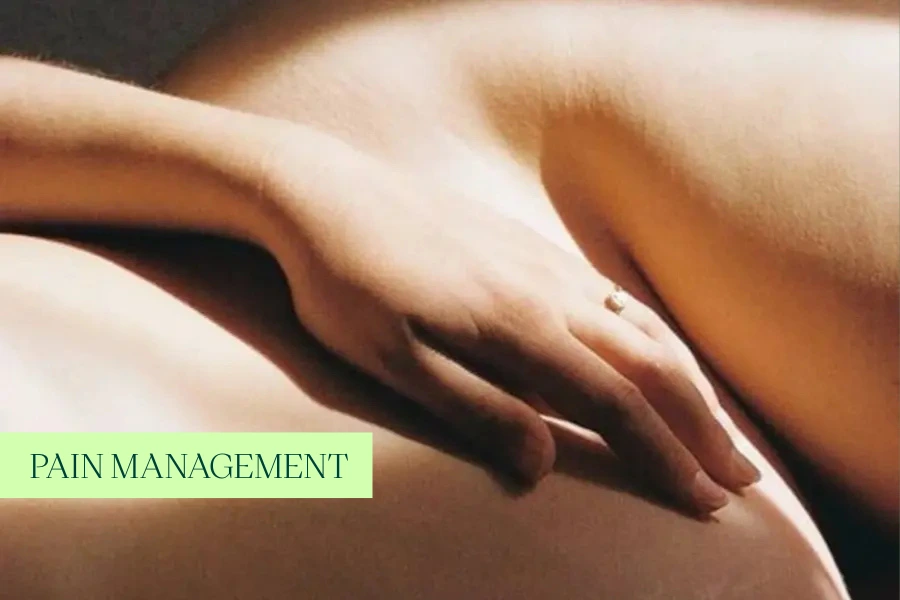Endometriosis, often a silent yet profound disruptor in the lives of those it touches, warrants attention – not only for its prevalence – but also for the potential relief that unconventional treatments like natural therapies might offer.
Symptoms can occur as early as eight years old and it takes a long time for patients to acquire a diagnosis in Australia and around the world.
Learn more about endometriosis below and how natural therapies play a role in its management.
Understanding Endometriosis: A Journey of Resilience
When someone has endometriosis, it means that some of their tissue resembling the womb lining ventures beyond its usual boundaries and often spreads to unexpected corners of the body. This is the reality of endometriosis—a disorder not confined to reproductive organs but capable of infiltrating areas as diverse as the bowel, bladder, and even the skin and brain.
Endometriosis symptoms are diverse and often misunderstood and with an average timeline of diagnosis is 6.5 years in Australia. Six and a half years is also the world average diagnosis length – but there is a wide spectrum across the world with only a 0.5-year delay in Brazil and an incredible 27-year delay in the UK.
Endometriosis in Everyday Life: Pain Management & Symptoms
For many, the persistent pelvic pain, especially around menstruation, becomes an unwelcome companion, disrupting daily activities and casting shadows over hopes for fertility.
For others, endometriosis symptoms include abdominal pain, pain during or after sex, pain going to the toilet, irregular bleeding, changes in toilet habits, and not being able to get pregnant (infertility).
The journey to understand endometriosis, seek diagnosis and manage symptoms is a long one. Often it can be the related emotional and mental stress of managing symptoms and seeking the best individual healthcare support that can be the most overwhelming for patients.
Embracing Natural Therapies: A Path to Empowerment
In the quest for relief, patients and healthcare providers alike are exploring unconventional treatments, and among them, medicinal cannabis stands out. While the research is ongoing and it might not be suitable for everyone, there is growing evidence suggesting its potential in alleviating symptoms associated with endometriosis.
The cannabis plant, with its compounds like CBD and THC, has been noted for its analgesic and anti-inflammatory properties, which could offer respite from the debilitating pain and inflammation characteristic of the condition.
- In one study which included several hundred people with endometriosis across Australia and New Zealand, participants self-reported to using cannabis to manage symptoms – whether using a prescription or not.
- A worldwide survey study with a 1634 participants managing endometriosis showed that 55% of respondents with endometriosis used cannabis specifically for symptom management onlyAnother study showed how cannabis appeared to be effective for endometriosis associated pelvic pain, gastrointestinal issues and mood, with effectiveness differing based on method of ingestion.
- Another survey showed that approximately 1 in 10 women with endometriosis self-managed their symptoms with cannabis. Self-reported effectiveness in pain reduction was high (7.6 of 10), with 56% also able to reduce pharmaceutical medications by at least half. Women reported the greatest improvements in sleep and in nausea and vomiting. Adverse effects were infrequent (10%) and minor.. Management strategies should be personalised for the individual and with some reported to include “heat packs (70%), dietary changes (44%), exercise (42%), yoga or pilates (35%) and cannabis (13%).”

Looking Ahead: Collaborating for Change around Endometriosis
As Endometriosis Awareness Month unfolds, it becomes imperative to foster collaboration among patients, healthcare providers, and advocates.
Organisations such as Endometriosis Australia play a pivotal role in raising awareness, driving research, and advocating for improved understanding and care.
Initiatives like the EndoCannED study underscore the importance of exploring novel interventions like medicinal cannabis, providing hope to those seeking relief from the burdens imposed by endometriosis.
Joining the Movement: A Call to Action for Endometriosis
For individuals living with endometriosis, there’s a palpable sense of solidarity and support permeating the atmosphere this March.
If you’re over 20 and living with endometriosis in Victoria, you have a unique opportunity to participate in the EndoCannED study.
In Sydney, the Endo Australia has organised a high tea with inspirational speakers who are paving the way in women’s health and advocacy.
There are many other local and national groups to join if someone wants to participate and advocate for people living with endometriosis. Management apps like Qendo allow Australians to track their symptoms and record how they’re managing their endometriosis.
Endometriosis Awareness Month serves as a reminder of natural therapies as an option in managing complex conditions like endometriosis.
Through collaboration, advocacy, and research, we can transform the landscape of endometriosis care, offering hope and empowerment to those affected.
If you are interested in learning more about natural therapies and endometriosis, book a free call with one of our Astrid nurses here. The Astrid healthcare team are experts in supporting patients through each individual’s wide ranging health and wellness journey.
